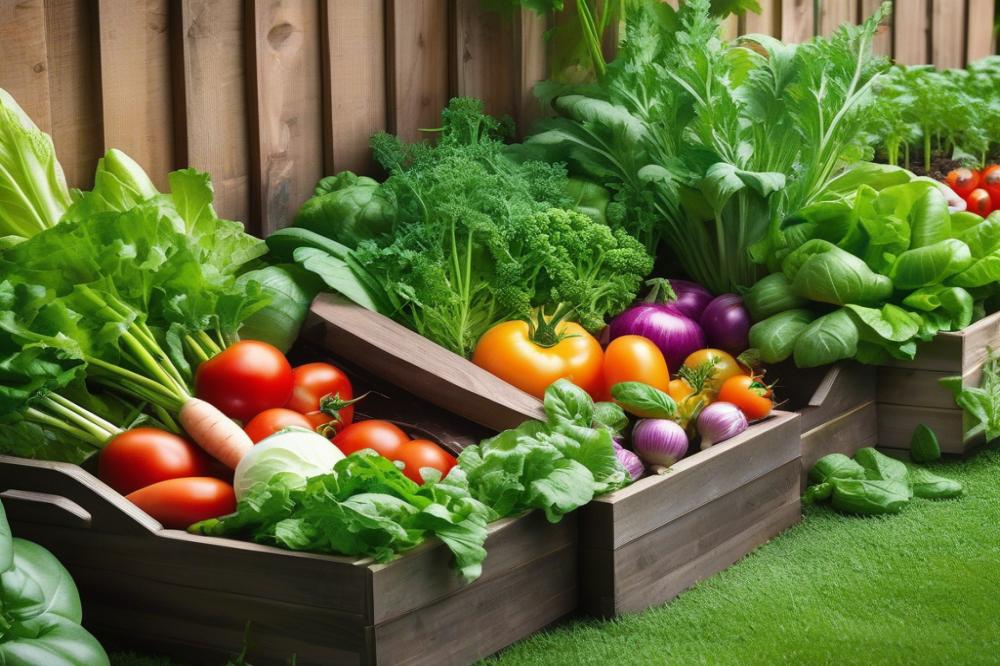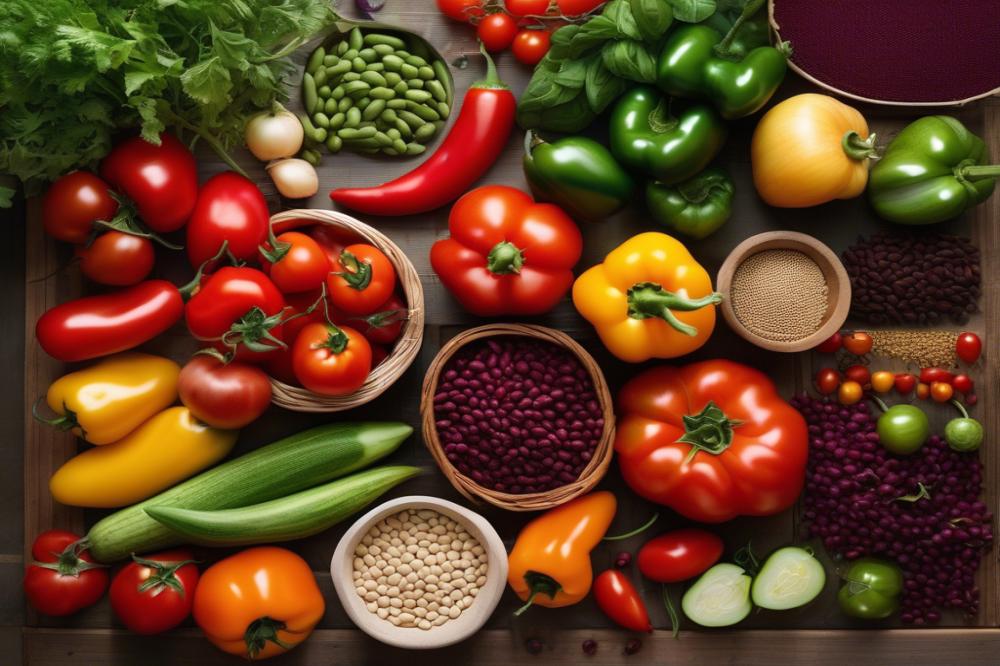Exploring Pink Berkeley Tie-Dye Tomatoes
Gardeners have long cherished heirloom tomatoes for their distinct flavors and vibrant appearances. Among these prized varieties, Pink Berkeley Tie-Dye Tomatoes stand out, captivating the hearts of many. This unusual heirloom variety is gaining traction among gardening enthusiasts due to its striking color and extraordinary taste.
heirloom tomatoes, in general, carry a rich history. They often boast unique characteristics that have been passed down through generations. These fruits are grown from seeds that are not genetically modified. Their cultivation is a nod to tradition and sustainable practices. For those who appreciate organic gardening, this is especially significant.
The flavor profile of Pink Berkeley Tie-Dye Tomatoes adds to their allure. They offer a balance of sweetness and acidity, creating a delicious experience for the taste buds. Gardeners describe these tomatoes as perfect for fresh salads and other dishes. Furthermore, the fruit characteristics include ribbed skin with stunning swirls of pink and green. This eye-catching appearance makes them a favorite at farmers’ markets.
When it comes to growing tips, adopting proper garden care is important. Ensuring healthy plants involves regular watering and the right exposure to sunlight. Interestingly, this variety shows promising disease resistance, which is beneficial for novice and experienced growers alike. With proper attention, cultivating these tomatoes can be a rewarding adventure.
In conclusion, the rising popularity of Pink Berkeley Tie-Dye Tomatoes among gardeners reflects their appealing attributes. As more people explore the world of heirloom tomatoes, these flavorful fruits serve as a vibrant addition to any garden. Embrace the journey of planting and savor the extraordinary taste these tomatoes bring to the table.
unique features of Pink Berkeley Tie-Dye Tomatoes


Pink Berkeley Tie-Dye Tomatoes are truly a sight to behold. Their striking appearance captivates any gardener with a stunning mix of pink and green stripes. These tomatoes are medium-sized, typically growing to about 4 to 6 ounces. Their shape is round to slightly oblate, a common feature in many heirloom varieties. The ripening process is quite fascinating as well; they transition from green to a vibrant pink, with green streaks giving them a vivid and unusual look.
This heirloom variety has a rich backstory. Initially introduced in the 1990s by a dedicated gardener in California, they have roots that connect to both history and tradition. Heirloom varieties are cherished for their unique traits and often carry stories like this behind them. It’s exciting to think about the generations of gardeners who have grown these tomatoes, passing down their techniques and knowledge.
The flavor profile of Pink Berkeley Tie-Dye Tomatoes sets them apart from many standard varieties. Sweet and tangy, they boast a depth of flavor that enhances a variety of dishes. Gardeners love to use them in salads or as a topping for sandwiches. Their vibrant colors make meals visually appealing, which is always a bonus. When you bite into one, the taste truly reflects its joy of being grown in a home garden.
These tomatoes also exhibit a good level of disease resistance. This characteristic can be particularly helpful for those in humid climates where blights and molds thrive. With basic garden care practices and organic gardening approaches, you can cultivate these beauties successfully. The right amount of sunlight, proper watering, and attention can lead to a bountiful harvest.
Growing tips are essential for anyone looking to cultivate these tomatoes. Start seeds indoors for an earlier yield, as they require a warm growing season. When transplanting, select a sunny spot in your garden to maximize growth. Fertile, well-draining soil will support their development, while added mulch retains moisture. Keeping an eye on pests is also wise; taking preventive measures can safeguard your crop.
In summary, these tomatoes not only offer wonderful characteristics in growth but also enhance any garden with their beauty. Whether you are a seasoned gardener or a beginner, there’s something enchanting about nurturing this heirloom treasure.
Flavor Profile of Pink Berkeley Tie-Dye Tomatoes


The taste of Pink Berkeley Tie-Dye Tomatoes is deliciously distinctive. Their sweet, rich flavor captures the essence of summer gardens. Each bite carries a refreshing hint of acidity, balancing the sweetness perfectly. This unique flavor profile sets them apart from common varieties like beefsteak or Roma tomatoes.
Where some tomatoes might lean heavily toward sweetness or tartness, Pink Berkeley Tie-Dye strikes an excellent balance. They possess a juicy texture that enhances their appeal in salads and sandwiches. Gardeners cherish these heirloom varieties for their outstanding taste and vibrant fruit characteristics.
In culinary uses, these tomatoes shine brightly. Slices atop a caprese salad offer a delightful contrast to fresh mozzarella and basil. When roasted, their sweetness deepens, making them perfect for pasta sauces or pizzas. Comparing them to a classic heirloom like the Brandywine reveals a more complex flavor, with layers that unfold as you eat.
Disease resistance often becomes a concern in tomato cultivation. Thankfully, these tomatoes maintain good health when given proper garden care. growing tips include ensuring adequate sunlight and consistent watering to encourage their strong flavor development. Organic gardening practices can further enhance their taste and health benefits.
The vibrant colors of Pink Berkeley Tie-Dye also contribute to appetizing presentations on the plate. Their striking appearance and rich taste attract food enthusiasts looking for something special. By choosing these tomatoes, cooks can elevate simple dishes into memorable meals that celebrate fresh, garden-grown produce.
Growing Tips for Pink Berkeley Tie-Dye Tomatoes


Growing Pink Berkeley Tie-Dye Tomatoes in your garden can be a rewarding experience. Start with soil preparation, an essential step for healthy plants. Testing the soil pH is important. Aim for a range between 6.0 and 7.0, as tomatoes thrive in slightly acidic to neutral soil.
Amending your garden bed with organic matter like compost can improve soil structure. Adding well-rotted manure or peat moss enhances drainage and fertility. After preparing the bed, choose a sunny spot for planting. Tomatoes require at least six to eight hours of sunlight daily to develop their vibrant color and rich flavor profile.
When it comes to planting depth, dig a hole that is around one to two inches deeper than the root ball of your seedlings. This helps the plant develop a strong root system. Placing seedlings too deeply can cause issues, so be mindful of that. Ensure adequate spacing between each plant; about 18 to 24 inches apart gives them room to grow.
Watering practices play a critical role in plant growth. Water the seedlings thoroughly after planting. Keep the soil consistently moist but not waterlogged. Aim to water at the base of the plant in the early morning to preserve moisture and reduce disease risk. Rain can supplement, but monitor conditions to avoid drought stress.
Pruning is another vital aspect of garden care. Remove the lower leaves that touch the ground. This helps prevent soil-borne diseases from splashing onto the plant. Pinching off suckers can also promote healthier growth, directing energy towards fruit instead of foliage.
Regularly check your plants for signs of pests or diseases. Some heirloom varieties, including these tomatoes, have inherent disease resistance. Cultivating them with thoughtful attention can yield a bountiful harvest. Finally, enjoy the satisfaction of nurturing your tomato plants from seedlings to vibrant, fruit-laden vines.
Disease Resistance and Pest Management
Pink Berkeley Tie-Dye Tomatoes stand out among heirloom varieties due to their reasonable disease resistance. Many gardeners appreciate this trait as it helps reduce the need for constant monitoring and treatment. Unlike traditional tomatoes, these plants can better withstand common issues, such as blight and leaf spot. In comparison, some other heirlooms may struggle under similar conditions.
Among the most common pests that threaten tomato cultivation are aphids, spider mites, and whiteflies. Recognizing these unwanted visitors early is key to protecting your garden. Each of these pests can weaken plants, leading to poor growth or reduced fruit characteristics. Moreover, understanding their life cycles can aid in effective management.
Preventing issues starts with proper garden care. Rotating crops helps maintain soil health and prevents disease buildup. When growing tomatoes, keeping adequate spacing between plants allows for better airflow. This simple act can minimize dampness, which many diseases love. Pruning excess foliage also supports airflow and sunlight penetration.
For organic gardening, several methods can keep pests and diseases at bay. Companion planting can be beneficial. Herbs like basil or marigolds can be planted near tomatoes, as they naturally repel certain pests. Furthermore, employing insecticidal soaps or neem oil provides an extra layer of protection without harming beneficial insects.
Maintaining the right care routine is essential. Regularly checking plants for signs of distress helps catch problems early. If you notice issues, promptly removing affected leaves can keep diseases from spreading. Always remember to inspect new plants before adding them to your garden, as they may carry pests or diseases.
Harvesting and Storage
Harvesting Pink Berkeley Tie-Dye Tomatoes requires attention to detail. The optimal time for picking these fruits is when they reach full ripeness. Look for a vibrant blend of pink and green colors, which signals they have developed their full flavor profile. Gently squeeze the tomatoes; they should feel slightly soft but not mushy. A careful approach will aid in preserving their integrity.
Utilizing the correct methods during harvest can maintain fruit quality. Use clean, sharp scissors or pruners to snip the stem just above the fruit. Avoid twisting or pulling the tomatoes, as this can damage the plant and the fruit. Gardening enthusiasts should aim to harvest in the morning when temperatures are cooler, as this helps retain moisture and freshness.
After harvesting, proper storage techniques are essential. Store tomatoes at room temperature, away from direct sunlight. Placing them in a single layer prevents bruising. By keeping them out of the refrigerator, you can retain their rich flavor and unique features. Should you need to store them for longer, consider canning or drying. Both methods can enhance the fruit’s versatility in cooking.
Using organic gardening methods can promote healthier growth and superior taste. Disease resistance is a key benefit of these heirloom varieties. Regularly checking for pests and diseases during the growing season ensures optimal fruit quality at harvest time. By following good garden care practices, you can improve the longevity of your tomato plants and enhance your overall yield.
Be mindful of the fruit characteristics when choosing storage methods. The colorful skin and juicy flesh are what make these tomatoes special. Enjoying them soon after harvest provides the best experience. If you notice any blemishes or soft spots during storage, use those first or cook them into sauces. This approach maximizes usage and minimizes waste.
Final Thoughts
Growing this heirloom variety offers gardeners a delightful journey in cultivation. The pink and yellow stripes create a stunning visual that not only beautifies the garden but also excites the palate. Flavor is where these tomatoes truly shine; their sweet and tangy notes are a fantastic addition to meals, from fresh salads to gourmet sauces.
This variety is generally easy to care for, making it accessible even for those new to gardening. Simple growing tips can aid anyone in nurturing their plants to maturity. Health benefits linked to heirloom varieties make them a wise choice in addition to taste. Each fruit harvested carries with it the rich history and tradition of heirloom agriculture.
Readers are encouraged to consider planting these exceptional tomatoes. A rewarding gardening experience awaits those willing to invest time in this colorful crop. Embrace the opportunity to grow something that not only nourishes but also brings joy.



